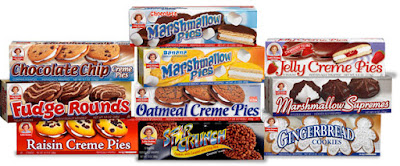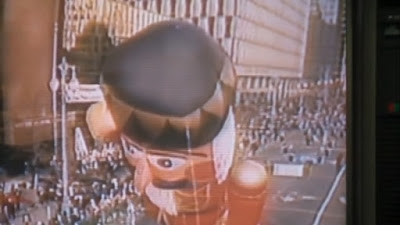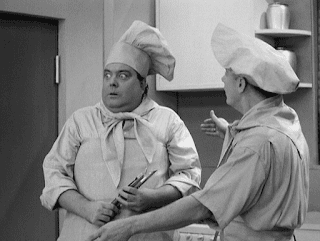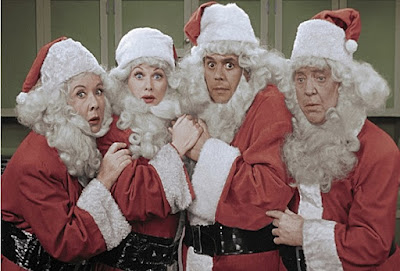Later today, WWE's Monday Night RAW will celebrate its 30th Anniversary. Once the flagship brand for the show, it has been relegated to the "B" title since Friday's Smackdown moved to FOX and network television in 2019, with a highly lucrative deal reaching $205 million per year in licensing fees.
RAW itself, though, technically turned thirty on January 11th.
At one time, the "must watch" show for any wrestling fan, RAW has undoubtedly seen better days. In my opinion, anyway. The last time I watched Monday Night RAW was years ago, right before AEW came on the scene in 2019, when my interest in wrestling was pretty low. Tonight, at RAW XXX (30), a list of past legends and superstars will return for a little cameo and one more time in the spotlight.
You better believe I'll be tuning in to watch them. I'm already expecting to not have a clue who half of the current roster of wrestlers are, but I'm tuning in tonight for nostalgia's sake. I'm assuming any bump in ratings tonight will be other viewers doing the same, tuning out of RAW again for good once the show is over.
That's the hard part for WWE. They know that "lapsed fans" will be tuning in tonight. WWE calls people like me (former die-hards who no longer watch the show) lapsed fans and knows we are returning for a taste of nostalgia for what used to make us love the show. But, WWE must also showcase new stars because those old-timers won't be there next week. They must give us enough of what made us love wrestling and RAW in the first place and then slowly show us what they currently offer, hoping it piques our interest and we continue returning to our old timeslot of 8pm on Monday nights on the USA Network.
I grew up a WCW fan, as is well documented on this site. However, as a young wrestling fan, ANY wrestling was good wrestling. When my parents banned wrestling in the house, I'd sneak peeks on the Saturday morning syndicated shows for both WCW and WWF when I was supposed to be watching Saturday morning cartoons. Eventually, they started mentioning a new Monday night show, and while the clips were exciting, I knew there was no way my parents would let me watch wrestling when they'd be watching their favorite programs on Monday nights. Plus, I went to bed pretty early as a youngster, so I wouldn't have caught much of RAW anyway.
I didn't truly get into watching RAW (and WWE, for that matter) until about 1997 when the Monday Night War kicked off. I had been watching WCW and reading early days of wrestling internet on PRodigy, and along with the Saturday morning show, I didn't feel the need to watch RAW.
The first time I really remember watching RAW was at a hockey party when we all went over to one kids house and had pizza. We all watched wrestling on a giant projection TV, which was something I had never seen in person before.
I don't remember much about the show, but I remember Kane and Undertaker were full of hellfire and brimstone, and, honestly, it unnerved nerdy little 12-year-old me. The most memorable thing about that night was that it was one of the first nights I stayed up late and was out past my curfew. I called home around midnight to say I was late; at first, my Dad was more upset that I woke him up than I was late. When my neighbor's mom (he was on the team, too) drove us home, I walked into the house at 1am. That was super late for a relatively "good kid" like me. Honestly, it was the latest I had ever stayed awake to that point, except for when I was up all night sick.
I can remember, oddly enough, watching a very early episode of Monday Night RAW at Granny and Gramps' house. I thought my parents were there, but they would not have been if I had been watching wrestling in 1993. In any event, it just happened to be the RAW that Sean Waltman (then just a regular jobber named The Kid) upset Razor Ramon in a historic event that elevated Waltman from enhancement talent to regular superstar with the new name "1-2-3 Kid." Looking at the history books, that night was May 17, 1993.
My interest in RAW faded around 2000 when the Monday Night War ended. I got back into it in college in 2003, when my friends all began watching the shows after several weeks of playing the Raw vs. Smackdown Playstation games.
WCW was out of business, and WWE was my only option, but I liked the wrestling action better on Smackdown than Raw. I tuned out again sometime around 2008 but was back stronger than ever around 2014 when Daniel Bryan and his "Yes" movement made a run for the championship, leading up to the launch of the WWE Network at Wrestlemania 30.
This wrestling program that I can no longer sit through today once held a very special place in my heart. During that time, I always ensured I would catch every single episode.
As World Wrestling Entertainment celebrates thirty years of Monday Night Raw tonight, it's a good time to reflect on some of the meaningful and memorable moments during the thirty years of RAW!
On January 11, 1993, the World Wrestling Federation debuted a new show. One that was to be gritty, realistic, and "raw." Its new flagship program would debut on USA Network as a replacement for its longtime wrestling show, Prime Time Wrestling, which would end an eight-year run.
The first RAW was sixty minutes in length and broke new ground in televised wrestling regarding how the show was filmed and presented to the viewing audience. Much of wrestling had been filmed on a sound stage with a small audience in the past, much like WWF's Superstars and Wrestling Challenge. Rather than pre-recorded matches aired weeks after the fact, RAW was shot and aired live, with storylines and matches playing out on television just as they did in the arena.
 |
| Bobby Heenan, Mr. McMahon, and Randy Savage host RAW |
The show was initially hosted by wrestling legend Randy Savage, stand-up comic Rob Bartlett, and the owner of the WWF, Vince McMahon.
At the time, it was unknown to most viewers that Vince McMahon was the owner of the promotion and was just a familiar face behind the announcer's desk.
Randy Savage, the "Macho Man," had recently been asked to trade his wrestling boots for the announcer's microphone. He wasn't ready to hang them up, and despite being a refreshing voice on commentary, left the company for its competitor WCW a year and a half later, where he could continue his in-ring career.
Rob Bartlett, a New York-based stand-up comic, had no connection or knowledge of the wrestling business before RAW's debut. He was replaced just three months after the show's debut with legendary manager Bobby "The Brain" Heenan. Heenan, too, would leave the show at the end of 1993, leaving McMahon and Savage to host alone.
When Savage left at the end of 1994, McMahon would have different co-hosts each week, including Shawn Michaels and Jim Cornette. Finally, in April of 1995, Jerry "The King" Lawler became permanent co-host, a role he kept until 2014.
McMahon himself would serve as an announcer until 1997.
RAW originally aired live each week from the Grand Ballroom at the Manhattan Center, a small but impressive-looking theater in New York City. The intimate venue and live action were a successful improvement, and while ratings rose, the live schedule proved to be quite a financial drain on the company. From the summer of 1993 to the spring of 1997, the company would tape several weeks worth of episodes after a live one aired to save costs. The WWF would use small arenas in the New York metro area, such as the Mid-Hudson Civic Center in Poughkeepsie, New York.
Starting in November of 1993, the WWF took the show out of the Manhattan Center and on the road in smaller venues across the United States.
Compared to many of its predecessors, RAW would feature competitive matches between upper-level talent instead of one-sided "squash" matches that featured low-level enhancement talent. Early stars in the company featured on RAW were The Undertaker, Bret Hart, Rick Martel, Mr. Perfect, Lex Luger, "The Million Dollar Man" Ted DiBiase, Irwin R. Schyster, Razor Ramon, Shawn Michaels, Doink the Clown, and Yokozuna.
Important, storyline-developing matches were regularly featured, such as 1-2-3 Kid's upset victory over Razor Ramon in May of 1993. Also, in what would be Ric Flair's final appearance for the company for nearly ten years, he faced off against rival Mr. Perfect in one of the first episodes of Monday Night RAW in January 1993.
On September 4, 1995, the WWF's largest competitor, World Championship Wrestling, began airing its new show, Monday Nitro, on TNT. The two shows went head-to-head for the first time on September 11, 1995. Nitro was transmitted live, but due to RAW being pre-recorded on certain weeks, Nitro color commentators would frequently give away the results of WWF's taped shows while live on air. This, along with the emergence of the rapidly growing wrestling internet community, caused viewers to tune out of the taped RAW episodes since they already knew the results. Those taped episodes saw a steady decline in ratings.
Nitro moved to a two-hour episode on May 27, 1996, while RAW remained a one-hour episode until January 27, 1997.
RAW and Nitro would exchange rating victories between 1995 and 1996, but in the summer of 1996, when WCW launched the "new World order" invasion angle, the WCW went on an outstanding 84-consecutive week winning streak.
RAW saw its first major controversy after the November 4, 1996 episode when Brian Pillman (in storyline) pulled a gun on Stone Cold Steve Austin during a home-invasion segment. Pillman also was heard shouting the "F" curse word multiple times during the segment, which went uncensored due to the live nature of the program.
Following its move to a two-hour episode in January of 1997, the WWF also decided to run more episodes live to combat Nitro, with a regular schedule of one live episode followed by a taped one.
In an attempt to combat Nitro's popularity, a more hostile, edgier attitude was starting to enter the WWF's storylines. The WWF began an inter-promotional invasion angle in partnership with a regional yet widely popular promotion called Extreme Championship Wrestling (ECW). In an episode that saw RAW return to the Manhattan Center, the WWF's Jerry "The King" Lawler issued a challenge that was answered by ECW's Taz, Mikey Whipwreck, Sabu, Tommy Dreamer, D-Von Dudley, The Sandman, and Paul Heyman.
On March 3, 1997, a non-televised "house show" from Berlin, Germany, was filmed using a handful of cameras and poor lighting. It featured cold matches with no storyline build and was used as that week's episode of RAW. The show is notable for its poor presentation, and the first time the British Bulldog won the European Championship. It was poorly received by fans and WWE executives, and the following week, RAW was aired live with a completely revamped set and theme music ("The Beautiful People" by Marilyn Manson.) The show was renamed Raw is War.
The March 17, 1997, episode featured a memorable segment where Bret Hart shoved Vince McMahon to the mat and engaged in a profanity-laden tirade.
More controversial elements emerged during 1997, featuring the angle including Bret Hart and the Hart Foundation declaring war on the United States lifestyle. Paul Bearer delivered an intense promo on June 30, claiming that The Undertaker's brother, Kane, was still alive after surviving a house fire that Undertaker had started years ago. Gang warfare broke out between the Nation of Domination, The Disciples of the Apocalypse, and Los Boricuas. The development of Stone Cold Steve Austin's feud with company management, primarily Vince McMahon (now widely known on and off screen as the real-life owner of the WWF), is mainly responsible for the meteoric rise in popularity of the WWF.
Following the infamous Survivor Series of 1997, Vince McMahon was interviewed on RAW the following night, claiming that "Bret screwed Bret," thus launching the evil Mr. McMahon gimmick.
On the Raw is War following Wrestlemania in 1998, the WWF regained the lead in the Monday Night War with its new "Attitude" branding. Led by young, rising stars and fresh, modern feuds, the WWF caught fans' interest. The April 13, 1998 episode, headlined by a match between Austin and McMahon, finally ended WCW's impressive 84-week streak.
On January 4, 1999, Mick Foley, who had wrestled as Cactus Jack in WCW during the early 1990s, won the WWF Championship as Mankind on Raw is War. Nitro's announcer Tony Schiavone gave away the previously taped result on a live Nitro before sarcastically adding, "That's gonna put some butts in the seats," referring to Mankind's lesser star power.
However, fans disagreed, and approximately 600,000 viewers switched over to see the underdog win the WWF Championship. Ironically, that was the same night as the infamous "finger poke of doom." Please CLICK HERE to read all about that night that many fans consider the beginning of the end for WCW.
In May 1999, a tragedy occurred at the Over the Edge pay-per-view when Owen Hart died in a stunt gone wrong. The following night on Raw, temporarily renamed Raw is Owen, the entire episode was dedicated to Hart's memory as various personalities delivered out-of-character commentary. While it was Raw's second highest-rated episode up to that point, many considered it poor taste.
Every Raw episode was aired live by the end of the summer in 1999, as it does today. A few exceptions exist, such as Christmas and the holiday season when WWE will tape a few weeks of shows to give talent and crew time off for the holidays. During its first run on the USA Network (which ended in 2000), the WWE was frequently preempted by programs like the annual Westminster Kennel Club Dog Show or tennis' US Open.
In June of 2000, Viacom, the parent company of UPN (which aired WWF Smackdown!), won the rights to all WWF television programming for $12.6 million. On September 25, Raw is War premiered on TNN. TNN, at the time, was still The Nashville Network. It would later become The National Network (TNN) and Spike TV. It is now known as The Paramount Network.
The move to TNN, and the purchase of WCW, would lead to many changes in WWF television.
WCW saw a sharp decline in ratings and revenue during 2000, leading its owner Time Warner, to sell assets such as the name, video library, and talent contracts to the WWF in March of 2001. The final Nitro aired on March 26, 2001, and the show began with Vince McMahon making a short statement on the purchase and ended with a segment with his son, Shane McMahon, simulcasting on Nitro on TNT and RAW on TNN.
After the September 11 attacks of 2001 and the United States' upcoming invasion of Iraq and Afghanistan, the WWF retired the "Raw is War" moniker and simply changed it to "Raw."
In 2002, the WWF underwent a new storyline process they named "the brand extension." The WWF divided itself into two wrestling promotions with separate rosters, storylines, and branding. Raw and Smackdown would host each division and compete against each other. The brand split was undertaken because after purchasing their two biggest competitors, WCW and ECW, the WWF had an abundance of talent on the roster and no competition to work against. So, they created their own competition and gave their stacked roster additional opportunities for screen time.
In March of 2005, Viacom and WWE (the WWF changed its name to WWE - World Wrestling Entertainment in 2002) decided not to continue their agreement with Spike TV, ending their deal with Raw in September when the contract expired. WWE announced a new agreement with NBCUniversal to bring Raw back to its former home, the USA Network.
The show's first night back on USA Network was on October 3, 2005, and billed as "WWE Homecoming." The show was run as a three-hour special that featured the return of former Champions, such as Hulk Hogan, Stone Cold Steve Austin, Shawn Michaels, Mick Foley, and Triple H. Special cameos came from such legends as Roddy Piper, Jimmy Hart, Jimmy Snuka, Harley Race, and Ted DiBiase. Afterward, WWE began referring to the show as "Monday Night Raw" again instead of the simple "Raw."
On October 9, 2006, the company held another special three-hour Raw called "Raw Family Reunion," where the show debuted a new logo and theme song (Papa Roach's "To Be Loved") and featured talent from not only Raw but the Smackdown and ECW brands as well.
Later that month, RAW aired its 700th episode.
On June 25, 2007, Raw was scheduled to be a three-hour special memorial show for the storyline death of the Mr. McMahon character. Two weeks earlier, the show had broadcast an angle in which the limousine he was riding in was blown up by a bomb. The "Mr. McMahon Tribute Show" was canceled on the day it was scheduled to air due to the real-life death of Chris Benoit and his family.
The show was hastily canceled, and the audience was denied entrance to the arena. That night's episode instead became a three-hour tribute to Benoit. Unfortunately, as Raw was unfolding live, the grisly truth and details of the final moments of the Benoit family came to light. As soon as the episode ended, it was never mentioned again by WWE and was pulled from any tape-delay international markets. It was also removed from the tape library and cannot be viewed on the WWE Network as of writing.
On December 10, 2007, Raw celebrated its 15th Anniversary with another three-hour special on USA Network.
From July 2010 to July 2012, there was the infamous "Anonymous Raw General Manager" storyline, in which a shadowy figure would give orders through Raw announcer Michael Cole. It was eventually revealed to be Hornswoggle, which WWE officials revealed years later as a joke because they never intended to actually name someone.
In 2011, the brand split ended, and Raw used the branding "Supershow" to allude to the fact that wrestlers from the entire company would appear on the show.
On July 23, 2012, Raw aired its 1000th episode and began its permanent three-hour format. IT also saw a return to simply "Raw," losing the "Supershow" tagline.
The Raw episode from New Jersey, directly following 2013's Wrestlemania 29, started the trend in which fans would be extremely rowdy and hijack the show with various chants and songs. The post-Wrestlemania Raw, up until the COVID pandemic and the advent of a two-night Wrestlemania, would see highly vocal crowds eager to voice their pleasure (or displeasure) in the results of the previous night's Wrestlemania.
On January 26, 2015, a memorable Raw occurred in Hartford, Connecticut. A major winter storm hit the northeast, and travel bans across Connecticut prohibited wrestlers from attending the post-Royal Rumble show. This caused the Raw to be aired live from the WWE Headquarters in Stamford, Connecticut. John Layfield provided humourous weather reports and storyline commentary while introducing clips from the Royal Rumble pay-per-view from the night before, courtesy of the WWE Network. Michael Cole, Byron Saxton, and Renee Young interviewed several wrestlers, including Daniel Bryan, Seth Rollins, Brock Lesnar, Paul Heyman, and Roman Reigns (who was booed mercilessly in Philadelphia the night before) to fill air-time.
On the February 23, 2015 episode of Raw, the Divas (women's) division was showcased in a tag team match that lasted under 30 seconds. A Twitter hashtag called #GiveDivasAChance trended worldwide for over 36 hours, causing WWE, notably Stephanie and Vince McMahon, to comment on the status of women's wrestling. Charlotte Flair, with Sasha Banks and Becky Lynch, made their Raw debut on July 13, 2015, after Stephanie McMahon called for a "revolution" in the Divas division.
Shane McMahon returned to WWE for the first time in almost seven years on Raw's February 22, 2016 episode by interrupting his sister, Stephanie McMahon, while she received the "Vincent J. McMahon Legacy of Excellence" Award from their father, Vince McMahon. In a mixture of reality and storyline, Shane announced he wanted control of Raw since the show had several problems and declining ratings under Stephanie. Audience apathy was palpable during this period. By making a deal with his father, Shane would wrestle The Undertaker at Wrestlemania 32, and if Shane won, he would gain control of Raw.
Despite losing, Shane was named Raw's General Manager, anyway.
On May 25, 2016, WWE reintroduced the brand split, again giving Raw and Smackdown distinctive rosters. As part of the newly crowned "New Era," Raw received a new logo, red ring ropes, and a new stage and entrance set.
On October 3, Raw made history again by having women main event on the show for the first time since 2004 when Sasha Banks defeated Charlotte.
On January 22, 2018, WWE celebrated "Raw 25 Years" with a simulcast show at the Barclay's Center in Brooklyn and the Manhattan Center, home to the first Monday Night Raw. The following week, Raw updated its graphics and theme song once again.
On June 24, 2019, WWE implemented an order by Vince McMahon that there was to be no wrestling during the commercial breaks on Raw. This led to matches having pauses and restarts or best-of-three falls matches with relatively quick falls between commercial breaks. This was discontinued after the March 9, 2020 episode of Raw as a result of the COVID-19 pandemic, when all future episodes of the program were filmed from the WWE Performance Center in Orlando, Florida.
From March 12 to August 18, 2020, all live programs, including Raw, aired from the WWE Performance Center without fans in attendance to a mostly empty building. On the May 25 episode of Raw, NXT trainees were added in to act as live crowds at the Performance Center.
Following the August 18th episode of Smackdown, Raw began to air live from the Amway Center in Orlando, in WWE's newest creation: "The Thunderdome." The Thunderdome was a giant video wall that surrounded the ring where select fans would appear via their webcams. The fans would respond, allegedly on cue from WWE to the events happening in the ring.
The July 12, 2021, edition of Raw was the final episode of the Thunderdome.
In February 2022, Raw and NXT temporarily moved to Syfy in the United States due to USA Network broadcasting coverage of the 2022 Winter Olympics.
On January 23, 2023, WWE will air RAW XXX, celebrating 30 years of professional wrestling. RAW XXX will be the 1,548th episode of the program.
Congratulations, WWE, on this outstanding achievement!














.png)





Comments